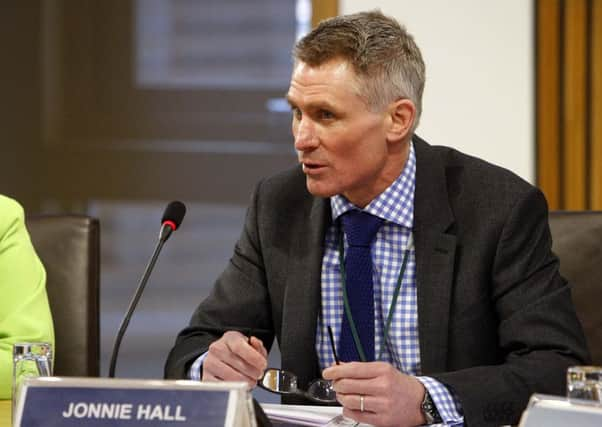'˜Cut' in rural development cash sparks fresh attacks
This article contains affiliate links. We may earn a small commission on items purchased through this article, but that does not affect our editorial judgement.


Ewing’s statement was based on an expectation that Scotland’s overall discretionary budget is expected to be 9.2 per cent lower in real terms in 2019-20 compared to 2010-11.
Added to which, there is still uncertainty about the future of the SRDP beyond a commitment from the UK government to maintain Pillar 1 payments to farmers until 2022.
• READ MORE: Farming news
Advertisement
Hide AdAdvertisement
Hide AdOne of the most important schemes within SRDP is the less favoured area support scheme (LFASS) and in its forward budget, the Scottish Government has allocated £410 million for the period from 2014 to 2020.
Cue outrage on the opposition benches with claims that will mean a £40m or 9 per cent drop in LFASS payments going forward.
Enter late yesterday, NFU Scotland’s policy director, Jonnie Hall to calm the troubled waters.
“While the headlines might read of LFASS funding being cut, the reality is that LFASS was being forced into change by EU requirements that have resulted in the LFASS budget being re-aligned,” he said.
“The so-called budget ‘cuts’ are, in fact, a re-alignment of what are always ‘indicative’ budgets, subject to variation depending on demand under different SRDP schemes and the Scottish Government’s overall spending priorities.”
Hall added: “The £40m LFASS ‘reduction’ to 2020, for example, is not a new cut but a reflection of the decision taken earlier this year by the Scottish Government to go for the ‘least worst’ option of an LFASS ‘parachute’ payment in 2018 of 80 per cent of payments made under LFASS 2017, rather than the significant upheaval and distribution of funding that would occur if Scotland introduced an areas of natural constraint scheme in 2018.
“While working to this assumption, both NFU Scotland and the Scottish Government are seeking clarification from the European Commission that this step can be deferred until 2019. If that’s the case, then it puts a totally different slant on things, as by that time the UK and Scotland will be beyond Brexit and the constraints of EU regulations – giving scope to re-think how we support agricultural systems in more disadvantaged areas.”
Advertisement
Hide AdAdvertisement
Hide AdHall also pointed to another reason behind the supposed cutback in LFASS. “A real concern of NFU Scotland in the scramble for basic payment scheme entitlements established in 2015 was the potential shift of large areas of seasonal grazing going back in-hand and, as a consequence, neither the landowner nor the grazing tenant being in a position to use that land for an LFASS claim.
“We’re currently exploring with the Scottish Government how significant a decline there may have been in areas of land no longer being claimed under LFASS.”
He added that LFASS and the rest of the SRDP is a dynamic programme whereby funding does shift laterally to reflect demand and priorities, but it is also constantly under pressure to help out with the Scottish Government’s overall spending plans.
First raises farm-gate milk price
With butter and cream prices hitting record highs and milk production falling below expected levels for this time of year, raw milk prices are tightening up.
In the latest of a series of price rises from milk buyers, First Milk has this week confirmed that its member prices will rise by between 1p per litre (ppl) and 1.1ppl from tomorrow.
Last month, the Scottish-based farmer co-operative wrote to members detailing plans to discontinue a previous pricing policy along with individual transport charges. At that time, it also indicated it would introduce a production bonus. These changes aimed at incentivising milk production to meet growing customer demand, will also be implemented from tomorrow.
The First Milk move come at the same time as butter and cream prices continued their meteoric rise, smashing previous records to achieve the highest values since the start of the millennium.
Advertisement
Hide AdAdvertisement
Hide AdNormally August is a quiet month for wholesale market trade but the average UK butter wholesale price jumped 13 per cent in August to £6,150 per tonne, a whopping 89 per cent higher than the same month last year and 232 per cent higher than when prices began their upward climb in March 2016.
The tightening of price of milk products has also been triggered by a fall in production of 13 per cent between the middle of May and middle of August. Much of this is attributed to poor weather affecting milk cows. While the seasonal fall is in line with the drop recorded last year, it is significantly greater than the decline normally seen at this time of year.